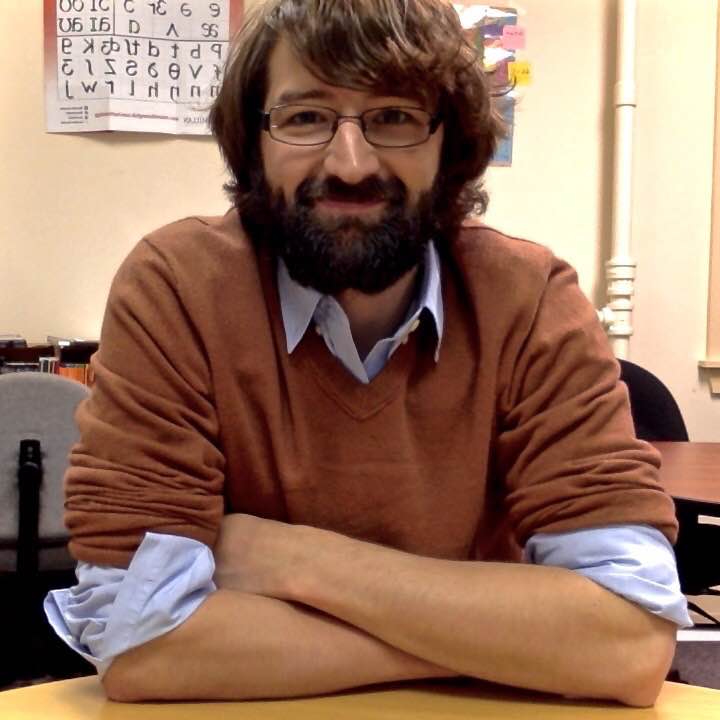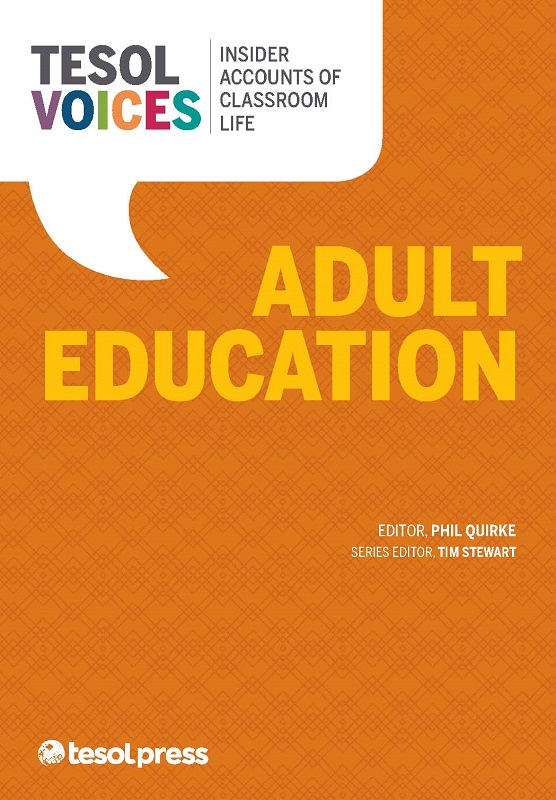Grammatically Speaking
by Michelle Jackson
 How to Teach Present Tense To Be
How to Teach Present Tense To Be
Research states that students retain more information when they engage in active learning. That is to say, there are more learning gains when students are asked to apply knowledge and complete activities within a discipline. One of the inherent beauties of the language classroom is that it is ripe with opportunities for active learning. We can always find creative ways for students to practice new vocabulary, test their understanding of grammar, or develop spoken fluency. There are innumerable ways that we can structure our courses so that students do more and thus learn more.
The following activity not only taps into this research, it also focuses on the present tense verb to be—one of the most often used conjugations. Furthermore, it allows students to apply grammar in context as they interview their peers, thus strengthening classroom community.
Materials Required
- A copy of the interview questions (below) and writing utensils for all students
- Chalkboard, whiteboard, or doc cam and writing utensils
Timing: About 30 minutes
Step 1
Explain to students that the present tense of the verb to be is used to express age, nationality, and health, as well as to describe people, places, or objects. Students will practice this tense as they interview their classmates. (3 minutes)
Step 2
Provide each student with a copy of the interview questions (below). Students will walk around the classroom, asking each question to two different classmates. They will write down their peers’ names and responses to share later. (15 minutes)
Step 3
After all students have two responses to each of the interview questions, the whole class reviews the activity. Call on students individually to share answers they gathered from their peers for Questions 1–8. Note the proper use of the present tense to be. Draw connections between patterns of answers (e.g., “A lot of us come from large families,” or “Many of us own a dog.”) (15 minutes)
Optional Extension
During Step 2, there are a few options available. If you feel that students may benefit from modeling, you can have your own sheet of questions and walk around the room gathering answers just like the students. Conversely, you can walk around the room listening to students’ utterances and noting instances in which they get the present form correct or incorrect. These patterns can be reviewed during Step 3.
If your classroom does not readily allow for students to move around, students could interview a partner in-depth, asking him or her all of the interview questions. These responses could be written into a paragraph and submitted for a grade, or students could introduce their partners to the class.
The Interview Questions
- How are you doing?
- How old are you?
- Do you have siblings? How old are they?
- What is your nationality?
- What is your family like?
- What is your house or apartment like?
- What is your best friend like?
- Do you have pets? What are they like?
Happy teaching,
Michelle
Dr. Michelle Jackson is the associate director of teaching at New Mexico State University’s Teaching Academy. She designs, develops, and delivers workshops on a variety of teaching and learning topics. Prior to NMSU, she was the manager of the English Language Institute at UT El Paso. She has taught English as a second language at UT El Paso and Harvard University as well as Spanish at UT Austin.
TESOL Blogs
Interested in writing a blog for TESOL?
Read the submission guidelines and send us your post!
Check out a few of the most popular TESOL Blogs from the past year:
|
Pull-Out vs Push-In ESL Programs in Elementary Schools, by Judie Haynes
 After lively discussions on the NJTESOL/NJBE member hotlist and during a Twitter #ELLCHAT, I realized that pull-out ESL vs. having ESL teachers push-in to the general education classroom is still a hot-button issue for practitioners in the field. I invited Monica Schnee, an ESL practitioner in River Edge, a K–6 district in New Jersey, to write a guest blog on this issue. Monica has gone from teaching exclusively using a pull-out ESL model to mostly coteaching, and I feel that she sees the benefits of each model. Her ESL program is a NJ model program benefiting all students and practitioners. Read more. After lively discussions on the NJTESOL/NJBE member hotlist and during a Twitter #ELLCHAT, I realized that pull-out ESL vs. having ESL teachers push-in to the general education classroom is still a hot-button issue for practitioners in the field. I invited Monica Schnee, an ESL practitioner in River Edge, a K–6 district in New Jersey, to write a guest blog on this issue. Monica has gone from teaching exclusively using a pull-out ESL model to mostly coteaching, and I feel that she sees the benefits of each model. Her ESL program is a NJ model program benefiting all students and practitioners. Read more.
|
|
Role-Playing the Present Perfect: A Speaking Activity, by Alexandra Lowe
 In a recent post, I described having my students “eavesdrop” on how the present perfect tense is actually used in the world they live in: at work, on TV, on the Internet, and by their children as they speak English with their friends. As promised, here is one of the activities I have used successfully in intermediate-level classes to put what my students discovered into practice. Read more. In a recent post, I described having my students “eavesdrop” on how the present perfect tense is actually used in the world they live in: at work, on TV, on the Internet, and by their children as they speak English with their friends. As promised, here is one of the activities I have used successfully in intermediate-level classes to put what my students discovered into practice. Read more.
|
|
Fluency and Accuracy Activities: Striking a Balance, by Robert Sheppard
 In everyday usage, fluent is often used interchangeably with proficient, as in, He’s pretty fluent in Arabic. But in language teaching, fluency is a bit more technical and just one component of language proficiency, often discussed in tandem with accuracy: Some learners speak very fluently, but their speech may be riddled with errors. Conversely, some learners speak haltingly but with a great deal of accuracy. Read more. In everyday usage, fluent is often used interchangeably with proficient, as in, He’s pretty fluent in Arabic. But in language teaching, fluency is a bit more technical and just one component of language proficiency, often discussed in tandem with accuracy: Some learners speak very fluently, but their speech may be riddled with errors. Conversely, some learners speak haltingly but with a great deal of accuracy. Read more.
|
TESOL Bookstore

Featured Resources from TESOL Press
 Teaching English to Chinese Learners in U.S. Colleges
Teaching English to Chinese Learners in U.S. Colleges
Ke Xu and Liglan Cao
Gain an in-depth understanding of the Chinese learner to improve your teaching practices and help your students succeed. Take a step back from familiar contexts and examine how institutional structures, the relationship between the U.S. and a student's country of origin, and the student's motivations and attitudes all play a role in their English learning.
 TESOL Voices: Adult Education
TESOL Voices: Adult Education
Tim Stewart, Editor
Follow the triumph and trials of real-life students as they learn English, whether they're pursuing it for their vocation, as immigrants to a new country, for travel, or for their very survival.
 More Than A Native Speaker: An Introduction to Teaching English Abroad, Third Edition
More Than A Native Speaker: An Introduction to Teaching English Abroad, Third Edition
Don Snow and Maxi-Ann Campbell
In this newly updated third edition, learn step-by-step how to effectively teach English abroad. Gain valuable tips and resources for teaching in an unfamiliar educational system, working with students of varying ages and skill levels, and adapting to life in a different culture. A rich array of online resources and activities included.